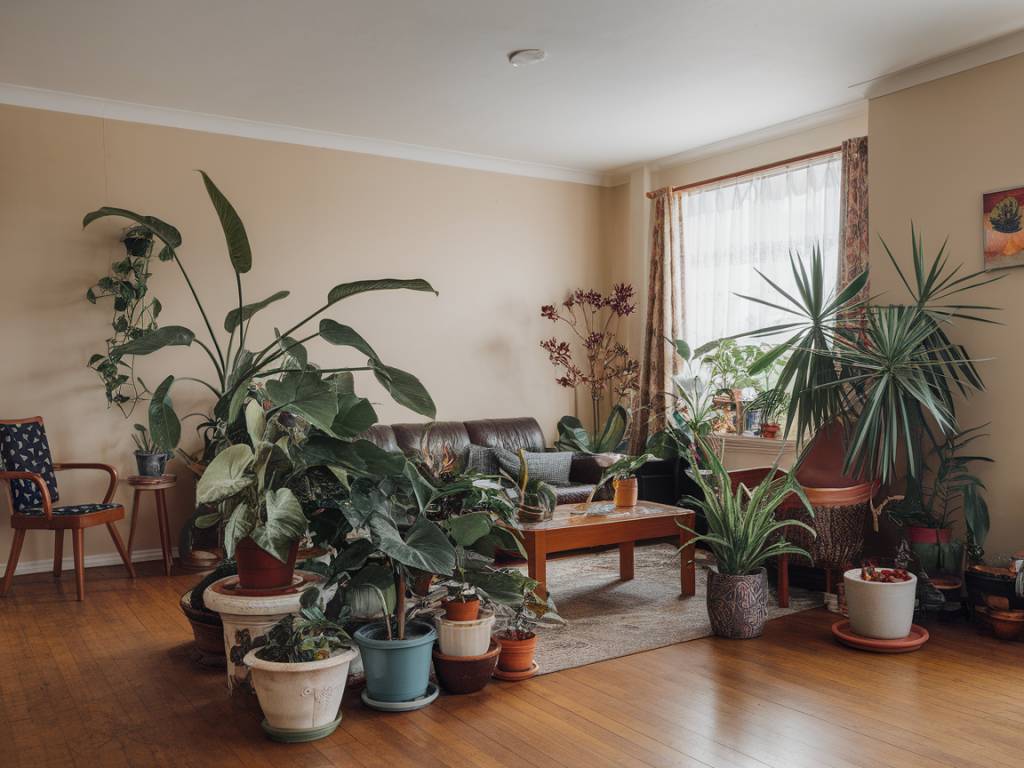
Bringing Nature Inside: Why Indoor Plants Are More Than Just Decoration
Have you ever walked into a room filled with greenery and felt instantly calmer? There’s a reason for that. Indoor plants not only elevate your home’s aesthetic appeal but also contribute significantly to improving air quality and enhancing your overall wellbeing. Whether you’re a seasoned plant parent or completely new to the idea, let’s explore why adding a touch of green to your interior isn’t just trendy—it’s transformative.
The Science Behind Cleaner Air
Here’s a fun fact: NASA conducted a study back in the 1980s that confirmed certain indoor plants can filter harmful toxins from the air. Yes, you read that right—a humble potted plant sitting in your living room can purify the air you breathe. Common toxins like benzene, formaldehyde, and trichloroethylene, often found in furniture, cleaning supplies, or paints, can be absorbed and neutralized by plants.
Take the peace lily, for example. This elegant plant isn’t just a beauty—it’s a powerhouse when it comes to filtering out toxins. Another star player is the spider plant. Not only is it low-maintenance, but it also works overtime to remove carbon monoxide and other impurities from the air. Who knew plants could multitask better than most of us?
Indoor Plants and Humidity: A Win for Your Lungs
If the winter months leave you battling dry air and a scratchy throat, you’ll be glad to know that plants naturally release moisture into the air through a process called transpiration. Essentially, they act like tiny, natural humidifiers. A grouping of plants can raise humidity levels significantly, reducing the risk of respiratory issues and dry skin.
Looking for a plant that excels at this? The Boston fern is a hydration hero. With its feathery leaves, it releases moisture at an impressive rate, making it perfect for those cold months when artificial heating dries out the indoor air.
Plants and Mental Wellbeing: More Than Meets the Eye
Beyond their physical benefits, plants play an unexpected—but vital—role in supporting mental health. Something about nurturing a living thing can trigger a sense of calm and accomplishment. It’s not just in your head—studies show that interacting with plants can lower stress levels, boost mood, and even improve concentration.
Ever heard of the term « biophilic design »? It essentially means integrating natural elements into our living environments. Indoor plants are the simplest way to practice it, bringing us closer to nature while we go about our busy lives. Feeling overwhelmed with work or life? Try introducing a snake plant to your office—its upright nature and air-purifying qualities create a focused, serene atmosphere. And bonus: It thrives with minimal care.
Choosing the Right Plants for Your Space
Before you rush to your nearest plant shop, it’s worth pausing to consider your space, lifestyle, and the level of care you’re ready to provide. Not all plants are created equal, and some can be fussier than others.
- Low-maintenance plants: If you’re a beginner or often forget to water, go for resilient options like pothos or ZZ plants. They’re virtually indestructible.
- Pets in the house: Some plants, like pothos or peace lilies, can be toxic to pets. Opt for non-toxic alternatives like areca palms or parlor palms instead.
- Small spaces: If you’re short on room, think vertical! Hanging planters or wall-mounted pots can add greenery without taking up precious floor space.
- Low light conditions: Don’t have sunlight pouring into your home? No problem. Plants like sansevieria (snake plant) and cast iron plants thrive in shaded corners.
Caring for Your New Green Friends
So you’ve got your plants—now what? Caring for them doesn’t have to feel like a second job, even if you’re juggling a hectic schedule. The key is understanding their basic needs.
- Water: Overwatering is one of the most common mistakes. A general rule of thumb? Stick your finger about an inch into the soil—if it’s dry, it’s time to water.
- Light: Assess how much natural light your plant receives. While some plants love bathing in sunlight, others prefer indirect or shaded conditions.
- Feeding: Don’t forget a little plant food! Fertilizing every other month during growing seasons can help your plants thrive.
If you do notice your plant looking down (literally), don’t panic. Yellow leaves, drooping stems, or slow growth are signs that something’s amiss—but usually, it’s an easy fix. A bit less water, a new pot, or a better light source can often work wonders.
The Ripple Effect of Having Plants at Home
What starts with a single pothos hanging in your kitchen might soon transform into a full-blown indoor jungle—and that’s not a bad thing. Having plants scattered around your home fosters a healthier, happier environment not just for you, but for anyone who walks through the door. It’s the kind of energy shift you’ll wonder how you ever lived without.
Plus, plants are fantastic conversation starters. Whether it’s trading care tips with friends or sharing a laugh about how you overwatered your fiddle-leaf fig (we’ve all been there), they’ve got a way of connecting people in unexpected ways.
Embrace the Power of Green
There’s a lot to be said for indoor plants—they clean your air, brighten your interiors, and boost your mental clarity. But more than all these benefits, they remind us to slow down and appreciate the simple things in life. So the next time you hesitate to pick up that trailing ivy or tiny succulent, go for it. A greener, healthier, and happier home is just a plant away.


